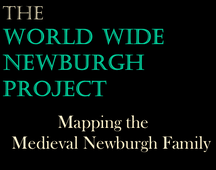Law Dictionary and Glossary Online
_____________
EXPLANATION OF INDENTURE
In ancient conveyancing. A writing containing a conveyance, bargain, contracts, covenants, or agreements between two or more, and indented in the top or side, answerable to another that likewise comprehends the self-same matter.
An instrument executed in parts, that is, consisting of the same matter written twice on the same sheet, with a space between, where, after execution, the parchment was cut through, divided (hence the name dividenda, q.v.) or indented (i.e. cut in a serrated line, whence the name indenture,) and a part delivered to each of the parties. Sometimes termed as "a pair of indentures."
Before indenting of deeds (or charters, as they were formerly called) came into use, when there were more parties than one interested in them, there were as many parts of them taken as there were parties interested, and one part was delivered to each of the parties. These multiplied parts were called Chartae pariclae or pariculae a barbarous term importing that they were equal or alike in all respects, (in omnibus pariles.)
Instead of this method (which resembles that now in use,) the practice was afterwards introduced, of writing the several parts of which the deed was to be composed, on the same sheet of parchment, leaving between the parts a space where a sentence was written or figure drawn, through which, after execution, the parchment was cut or divided into as many parts as there were parties. This prevailed as early as the times of the Saxons, the cuts or divisions being made in straight lines. Afterwards the word CYROGRAPHUM OR CHIROGRAPHUM was substituted for the intermediate sentence or figure, and the cut made through it in a line composed of a series of points or angles resembling the teeth of a saw, and from this indented or serrated line, these instruments came to receive the name of indentures, which is retained to this day. The practice of indenting, according to Butler began with lawyers as early as the reign of King John, and is substatially continued in modern conveyancing, though the indenting is no longer made on an intermediate line, but only on the edge of the paper or parchment, at the top of the instrument, and usually in a waving or scalloped line, instead of the original indented form.

